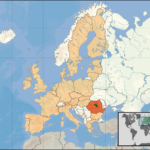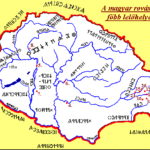Who are the Székelys?
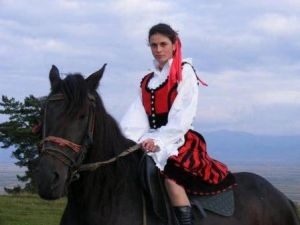
Today, about one in fifteen Hungarians is a Székely. Székely people (sometimes referred to as Szeklers in English) in the 16th and 17th centuries and today are struggling with the same problem: to regain their rights. Hopefully, their situation can be solved according to the values of the 21st century. Let me say at the outset that I am using the Oriental name order for Hungarians, where surnames come first; this is naturally applied to the Székelys.
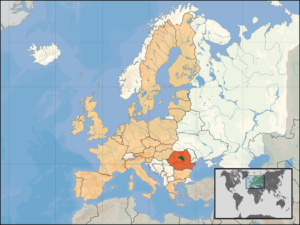
The Székely people are ancient Hungarians living in Transylvania in Székelyföld (Szeklerland), located in Romania. They even had autonomy during socialism between 1950-1968. About one million Székely people are living in an area larger than Kosovo. Let us not forget that plenty of Hungarians in the world are Székelys. Just like my wife, whose family was deported from their homeland in the 1930s – they were given one hour to pack their belongings.
Unfortunately, almost every Hungarian family has a similar story. Let us not forget that a significant population descended from the Székelys of Bukovina lives in the counties of Tolna and Baranya in Hungary, and in certain districts of Vojvodina in Serbia.
The Székely issue is a sensitive one, and ignoring it only makes things worse. Fortunately, there are more than a few Romanian friends of mine who believe that the Székelys are not a threat but rather an asset to Romania. Just like the German Saxons, the Székelys contribute a lot to the heritage of their present country, and similarly to the entire Hungarian nation. Hopefully, their problems can be solved in the European Union, unlike in the 16th or 17th century.

The Székely people consider themselves “the earliest Hungarians”, the remnants of Attila the Hun, who, according to their legends, left them behind in Transylvania. These legends tell that a contingent of Huns remained in Transylvania and later allied with the main Hungarian army that conquered the Carpathian Basin in the 9th century. The thirteenth-century chronicler Simon of Kéza (Kézai Simon) also claimed that the Székely people were descended from Huns who had lived in the mountains before the Hungarian conquest.
In fact, in the early Hungarian chronicles, it is written that the “home taker” chief Arpád found the Székely people there when he arrived in Transylvania with his “Magyar” (=Hungarian) tribes. The Székelys greeted him with great joy, as a kinsman would.

Later, the Székelys served as border guards, mainly in Transylvania, but many of them settled all along the borders of the Hungarian Kingdom. Without the Székely soldiers, it would have been difficult to stop the attacks of the eastern nomadic tribes: the Cumans, the Peschneghs (Besenyő), and the Oguz, not to mention the Mongols. The Székelys’ warfare was quite similar to the ancient Hungarian horse archers, so they were quite effective against the eastern invaders. Moreover, they could provide the king with a small army against the Ottomans until the end of the 18th century.
As for the Transylvanian Principality in the 16th and 17th centuries, the Székely nation was part of the traditional alliance of the “three nations”: the Hungarian nobles, the German Saxons, and the Székely guardsmen, who were considered a separate ethnic group “natio Siculica”. Regardless of much centralized power the prince of Transylvania possessed, he needed their support.
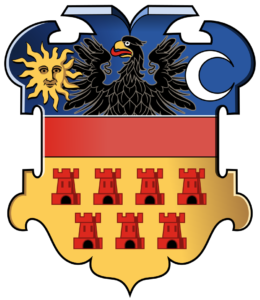
At the beginning of the Ottoman wars, the Székely territories came under the leadership of the Count of the Székelys (Latin: Comes Siculorum), initially a royal appointee from the non-Székely Hungarian nobility who was de facto a margrave; from the 15th century, the voivodes of Transylvania themselves held the office, under the rule of the Hungarian kings. These three groups ruled Transylvania from 1438, usually in harmony but sometimes in conflict.
In the 17th century, they still used their old runic alphabet. You should read it from right to left:

Here is a Székely soldier’s dance: https://www.youtube.com/watch?v=97-xs8IN9Wc
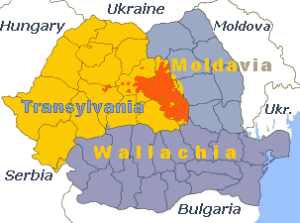
And here are more Székely dances, enjoy them:
https://www.youtube.com/watch?v=inepmEmqgMU
The Székelys, these tough mountain people, tended their land and lived in strict communities, but in times of war, they were mostly soldiers, traditionally guarding the mountains and their passes. In the 16th century, many of them decided to become farmers and pay taxes instead of the hard life of a soldier.

In 1595, Prince Báthory Zsigmond could muster 24,000 soldiers in his camp. At that time most of them had bows and arrows as well as spears, but 9,200 of them were equipped with rifles. They were concerned about their old privileges – to be free soldiers and not peasants – and in the 15th and 16th centuries were often divided by religion. They tended to support those powers that promised to protect their rights, so they were manipulated with great success. The Székelys are famous for their military exploits, for example, you can read about the Battle of Szárhegy, when a handful of Székely warriors successfully defended the border against 3,000 Crimean Tatars and Moldavians:
https://www.hungarianottomanwars.com/1541-1699/the-battle-of-szarhegy-1658/
In the time of Prince Rákóczi György I. they supported the prince: their general, Zólyomi Dávid and his Székelys helped the prince to defeat the attack of the Palatine Esterházy in 1631. The prince used them to guard the borders in 1634 when the Turkish Grand Vizier marched through Wallachia.
The Transylvanian prince visited them personally in the summer of 1635 to gather their forces. Then he tried to make up for the damage done to them, giving them justice and more privileges. He sent them against the Turks in 1636: the Székelys fought bravely against them at Nagyszalonta, led by Kornis Zsigmond. Here you can see some nice examples of Székely pottery:
https://www.hungarianottomanwars.com/masterpieces-of-art/ceramics-from-the-15-17th-centuries/

But this is only a fragment of their history. If you read my site, you will come across the deeds of the Székely warriors almost every second time I tell a story. Not to mention the fortified churches of the Székely land that helped them to survive the numerous raids of the Ottomans and Crimean Tatars. You can find many of these fortifications if you look at my menu and visit “Castles in the Hungaries” and choose Transylvania.
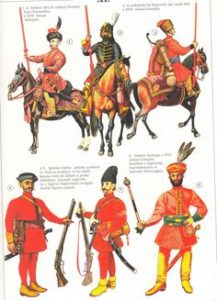
It is fascinating that these Székely people, the easternmost Hungarians, a million of them still live in Romania, like the Scots on the other edge of Europe. The comparison with the Celts gave me the idea to write my historical novel, whose hero is a Székely-Scottish soldier in the 17th century. According to my sources, the descendants of the Scottish mercenaries of the Transylvanian princes intermarried with the local Székelys. This is my historical novel “The Ring of Kékkő Castle”:

Much more could be said about the Székelys, whose history is unique among the Hungarians, although it cannot be separated from the history of the nation.
The main military actions of the Székely people in the 16th and 17th centuries:
According to the summary of Konnát Árpád, a Székely historian, the following events can be highlighted in this period
1506: King Ulászló II wanted the Székely people to pay the so-called “ox tax” like everyone else in case of the birth of a royal heir. The Székelys rebelled and set up camp in Marosszék. Captain Tomori Pál of Fogaras Castle set out against them with his 500 cavalrymen, but for the first time, he suffered a humiliating defeat. Tomori then retreated and gathered a more formidable army from the royal castles, scattering the Székely rebels. Read more about Tomori Pál here:
https://www.hungarianottomanwars.com/essays/general-tomori-pal-1475-1526/
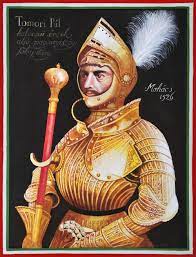
1510-1511: The common Székelys rebelled against the “primors”, their higher class in Csíkszék and Gyergyószék. They plundered the properties of the wealthy primors and killed those who did not flee.
1514: The Székely troops were used to suppress the peasant uprising of Dózsa György. They were led by Szapolyai János. The peasants of the rebellious monk, Brother Mészáros Lőrinc, were defeated near Kolozsvár by the allied Székely-Saxon army commanded by Lieutenant Barlabási Lénárd. Soon Andrási Márton led the Székely cavalrymen in the battle of Temesvár, where they scattered the army of Dózsa György.
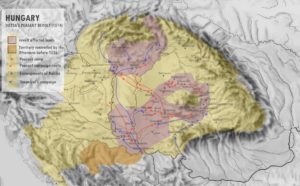
1519: The Székely “pixidarius” infantrymen rebelled and killed their leaders. They moved to the Erdővidék region to join the other Székely troops of the Háromszék region. However, their uprising ended at Homoródszentpál as the army of Szapolyai János defeated them.
1527-1528: All the Székely people took part in the Hungarian Civil War, supporting the national party against the Habsburgs. We can find the Székely soldiers in the lost battles of Tokaj and Szina as well as in the victorious battle of Sárospatak.
1529: Voivode Péter of Moldavia took advantage of the competition for the throne in Hungary and attacked the Székely land, destroying and plundering it for a month.
1531: Székely mercenaries conquered Saxon cities for King Szapolyai János. Read more about the German Saxons in Transylvania here:
https://www.hungarianottomanwars.com/essays/who-were-the-german-saxons-in-transylvania/
1542: Voivode Péter of Moldavia attacked the Székely land again and plundered it for a month, then the Székely troops, joined by other soldiers from Transylvania, drove him out of the country.
1543: Although forbidden by their ruler, the Székely soldiers of Háromszék led a private raid against Wallachia and returned home with a huge booty.
1548: Voivode Radu of Wallachia was forced to resign and he hired a few thousand Székely mercenaries to regain his throne. However, he was defeated by Voivode Mircse in the Battle of Peris. Almost all of the Székely mercenaries died in the battle. As an act of revenge, the Székelys of Háromszék attacked the Muntenia region and plundered the area.
1550: A Moldavian (Romanian) army attacked the Székely Land, and while they were busy plundering the countryside, the army of a soldier named Kemény János dealt them a crushing defeat. At the same time, Kendefi János defeated the invading Wallachian (Romanian) army in Szeben.

1551: The Székely soldiers took Lippa castle back from the Ottoman Turks.
1562: It was the first great Székely uprising under the command of Nagy György, Szepesi Ambrus and Bán András. First, they defeated Majláth Gábor, the captain of Fogaras Castle, in open battle and burned the masonry of all the wealthy Hungarian and Székely nobles. The arriving royal army defeated the smaller Székely army at Kisgörgény, and the larger Székely army surrendered. Before going home, they handed over their leaders to King János Zsigmond (the son of King Szapolyai János), who immediately had them impaled.
1575: The Székely units took part in the battle of Kerelószentpál, supporting the usurper Bekes Gábor. Báthory István (later King of Poland) won the battle and executed 34 Székelys on the spot who had instigated the uprising. He then ordered the body parts of many of the captured Székelys to be cut off.
1577: Báthory István helped Voivode Péter to retake his throne, with the help of a Székely army.
1579-1581: Several Székely units took part in the northern campaign of King Báthory István of Poland when he defeated the Russians in the Dwina region. There were not only Székely soldiers but also Székely carpenters who built huts for the Hungarian-Székely-Polish-Lithuanian troops for the winter season.
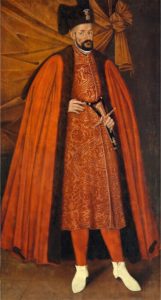
1594: The Székely auxiliaries fought in Moldavia and Wallachia. Under the command of Kornis Gáspár and Daczó Ferenc, they captured the pro-Ottoman Voivode Áron in Moldavia and brought him to Transylvania. At the same time, the Székelys helped Voivode Michael fight against the Turks in Wallachia.
1595: In the battle of Gyurgyevó, the devastating volley of the Székely infantrymen was the first step towards the victory of the Christians against the Ottomans.

1596: It was the time of the so-called “Bloody Carnival”, which was the biggest Székely uprising. While Prince Báthory Zsigmond was away (he resigned from the throne several times), he appointed Bocskai István, his loyal general, to guard the country. When Báthory heard of the Székely rebellion, he ordered his officers to refrain from atrocities. However, they disregarded his orders. Toldy István and Bogáthy Boldizsár rounded up all the main rebels in Marosszék and cruelly executed them by hanging or impaling them.
Apafi Miklós defeated the Székely common infantrymen from Gyergyó led by Gál János at Újfalu and killed all the prisoners. Hearing this, the rebels of Csík County laid down their arms, but they could not escape punishment so easily. In Háromszék, the Székelys were scattered by the soldiers of Ravazdi György after smaller fights. The troops of the Transylvanian prince were allowed to plunder the whole Székely land as if they were in a hostile foreign country.

1599: In the battle of Sellenberk the Székelys fought against each other. The Székelys of Marosszék and Aranyosszék sided with the Transylvanians, while the rest of the Székelys were in the army of Voivode Michael the Brave. After the battle, Prince Báthory András of Transylvania was killed by a common Székelys soldier named Ördög Balázs from Csíkszentmokos. The castles called Székelytámadt (“Székelys attacked”) and Várhegyi Castle were demolished because they had been built by King János Zsigmond to control the Székelys. The Székelys of the Háromszék region also captured Ravazdi György and took revenge for the “Bloody Carnival” by killing him most horribly.
1600: Under the command of Székely Mózes, the Székely troops conquered Moldavia, but they developed a dispute over the booty with their Wallachian (Romanian) allies in Tatros. In the end, the enraged Székelys slaughtered most of their Wallachian allies. Later, at the Battle of Miriszló, most of the Székelys fought on the side of Voivode Michael the Brave, and they were the ones who made a last stand at the end. You can read more about this battle here:
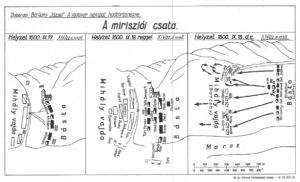
Note: Only the major military events have been listed, but the situation in Transylvania was tense enough even in times of peace. Not to mention the bloody feuds between families, the daily raids on the Borderland, and the battles between non-Székely soldiers and stray mercenaries.
1602-1604: It was the time of the “terrible reign” of General Basta. The Italian-Albanian general Giorgio Basta and his western mercenaries, accompanied by the Hungarian Hajdú soldiers, devastated the western part of the Székely land. They burned the town of Marosvásárhely twice and defeated the Székely soldiers of Nyárád at Nyárádtő, the guards of the castle of Bethlen and they were all slaughtered.
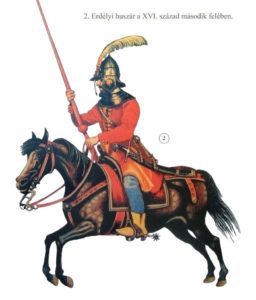
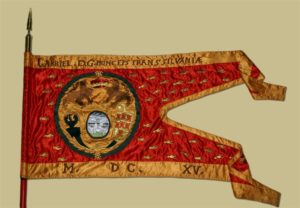
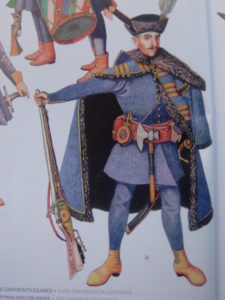
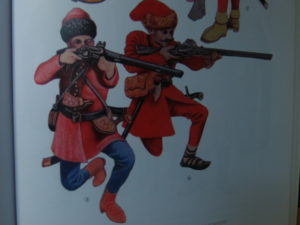
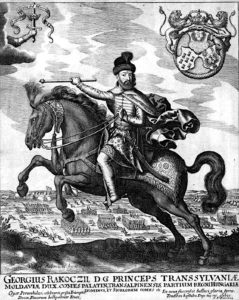
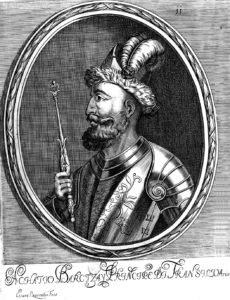

Read more about the Battle of Gyergyószárhegy here:
https://www.hungarianottomanwars.com/1541-1699/the-battle-of-szarhegy-1658/



Dear Readers, I can only make this content available through small donations or by selling my books or T-shirts.
If you like my writings, please feel free to support me with a coffee here:
You can check out my books on Amazon or Draft2Digital, they are available in hardcover, paperback, or ebook:
https://www.amazon.com/dp/198020490X
or at https://books2read.com/b/boYd81


My work can also be followed and supported on Patreon: Become a Patron!http://Become a Patron!




